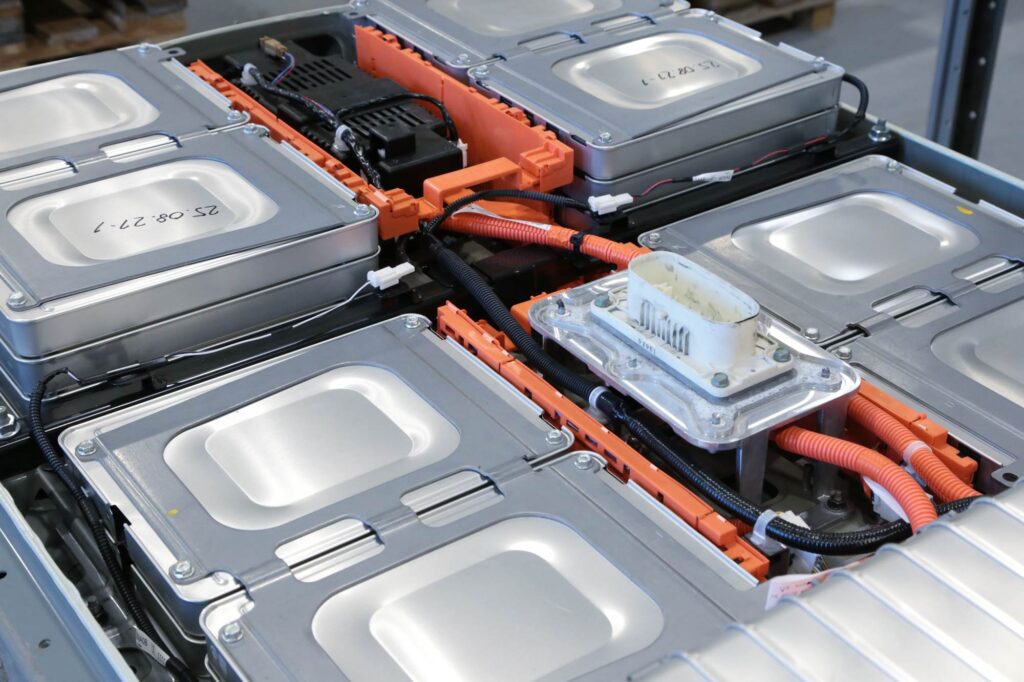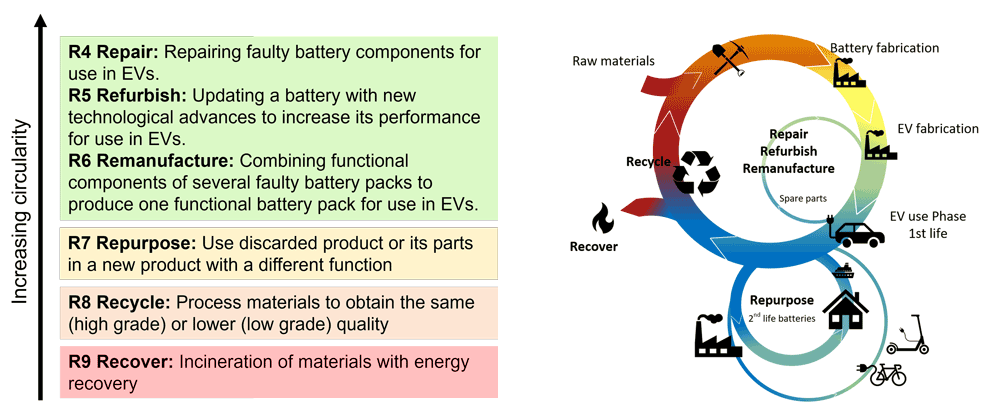Co-author: Fride Vullum-Bruer, SINTEF

As the roads fill with electric cars, so do the challenges of reimagining what happens to their batteries once the ride is over.
Used EV batteries: An untapped potential for Norway
As of September 2024, electric vehicles (EVs) have outnumbered petrol cars on the roads in Norway. The electrification of vehicles in Norway started early compared to other countries in Europe, and now hundreds of thousands EVs are in circulation, and thousands of batteries are reaching their expected lifetime every year. When an electric car battery reaches eighty percent of its initial capacity, it is recommended to have it replaced. The old batteries – also referred to as end-of-life (EoL) batteries- still have lots of potential for further use in stationary applications. This represents a huge opportunity in Norway, but for now, it remains underexploited.
Through extending the lifetime of EV batteries, the dependency on largely imported critical raw materials will be diminished, in addition to reducing the relative environmental footprint of the battery over its total lifetime. The number of available EoL batteries is becoming sufficient to create a whole new value chain for repurposing expired EV batteries – and give them a second life.
The effects of reusing EV batteries are largely positive. Still, many challenges need to be overcome for a successful scale-up of the 2nd life battery market. In the EU-funded project TREASoURcE, research scientists from SINTEF and VTT collaborated to identify the main challenges for second life batteries integration. The work consisted first and foremost of a thorough literature review on existing technologies for reuse and repurposing; as well as identifying different circular business models; and creating an overview of the relevant legislative landscape in the EU, Norway and Finland. To complement the literature review, interviews have been conducted with many stakeholders from different parts of the value chain to understand how these groups perceive the possibilities within this business segment and what they see as the main barriers for implementation of second life batteries. In total, 10 challenges were identified within four different categories: technical, legislative, eco-design, and safety/reliability.
Key challenges in EV battery reuse
Technical and eco-design challenges are interconnected and are largely related to restricted access to historical data, lack of standardisation in battery design, and rapid development of battery technology.
Batteries conception is driven by optimisation, with a focus on safety and trade-offs between efficiency, low manufacturing costs – and in the case of EV batteries, low weight. This means that every battery manufacturer owns their (patented) battery designs, with different geometries for the components (cell, modules and battery pack), and assembly methods (screws, adhesive, welding).
A variety of cell chemistries, in particular cathode materials, are used in batteries currently available on the market. This quantity of battery parameters, while allowing a total customisation of the battery pack for each EV, also translates into complexity when considering practices for dismantling EoL batteries. Time-consuming and tailored procedures mean very costly practices. Standardisation of battery pack designs is therefore a necessary step to make the extension of the battery lifetime profitable.
Standardisation and data access: critical for EV battery repurposing
Access to historical data of the battery pack also causes extra challenges for the dismantling process. As of 2024, access to most information regarding the battery usage, number and frequency of cycles, as well as charging details, is limited to the manufacturer. Companies wanting to evaluate the state of health (SoH) of a used battery are prohibited by law to extract or utilise this information. Thankfully, the new EU Battery regulation that entered into force in August 2023 addresses this challenge. The regulation covers the entire life cycle of the batteries, including production, use, reuse and recycling – ensuring safe, sustainable and competitive batteries. To guarantee easy and legal access to the battery properties, the new regulation requires that from 2027 onwards, all new batteries must come with a digital battery passport, providing model and manufacturer details, along with crucial safety information on the battery pack’s state of health.
The new regulation also stipulates that new battery packs should contain a certain percentage of recycled materials. Although the obvious objective is to reduce the ever-growing extraction rate of critical raw materials, which raises concerns about the sustainability of batteries, this approach diminishes the incentive to repair, refurbish, or remanufacture end-of-life (EoL) batteries. Instead, direct recycling becomes more profitable, ensuring manufacturers recover materials for use in production lines after an EV battery has reached its average lifespan of 7-10 years.

The safety aspect of EV battery reuse
Safety and reliability are important issues, particularly for end users. Many of the previously cited challenges, including limited access to historical data and various designs for the battery packs, also constitute safety issues. Companies taking over the EoL battery must carry on tests and dismount the pack with limited to no information regarding the battery, which can make it unsafe. But hazards are also present due to the lack of protocols for collection and storage of EoL batteries, as well as for the design of battery rooms. More standards and regulations on the construction of battery rooms, such as implementation of adequate fire suppression systems and proper ventilation, can ensure that new and refurbished stationary batteries can be installed and used in a safe manner. Safe and regulated battery handling can help reduce accidents and proper transport procedures would limit accidents / large battery fires, which currently contribute to a negative public perception towards second life batteries.
The Battery value chain is hindered by limited standards and legislation, as well as technical challenges. Several new international standards are under development, and the new EU Battery Regulation will address some of the identified challenges. Still, it will take time before these changes take effect, and a large volume of batteries without a digital battery passport will be reaching EoL within the next 10 to 15 years. These will need to be properly collected and tested, and current SoH diagnostics methods are time consuming and expensive. Thus, research is still needed to develop new diagnostics tools, reducing time and cost of re-purposing.

 For more information about the
For more information about the
0 comments on “The growing challenge of reusing EV batteries”